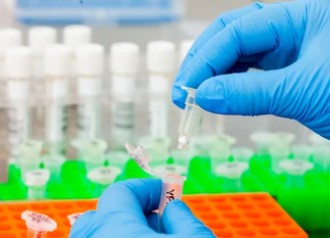
- Home
- PTMs Proteomics
- Glycoproteomics Analysis
- Glycopeptide Enrichment Service

Protein glycosylation is a ubiquitous and highly heterogeneous protein post-translational modification (PTM). Due to the heterogeneity of the glycoproteome, there is no single enrichment method that can fully capture the diversity of the glycoproteome. Creative Proteomics focuses on PTM proteomics analysis. With years of experience in this area, we are able to provide effective and customized glycopeptide enrichment services. Our experienced experts can provide perspectives on the most suitable methods for the different needs of our customers.
As an important type of PTM, protein glycosylation participates in many life activities such as protein folding, intercellular signaling, and immune response. The abnormal alterations in glycosylation have been detected or involved in many cancers and other diseases. For glycoproteome analysis, high-performance liquid chromatography and high-resolution mass spectrometry (HPLC-MS/MS) has proven to be a powerful tool for characterizing protein glycosylation. However, the low abundance of glycoproteins and the high complexity of glycan structures make the analysis of glycosylation extremely challenging. There is an urgent need to develop efficient enrichment methods for intact glycopeptides. Several glycosylation enrichment methods have been developed, which significantly improve the coverage of glycosylated peptides/proteins in different samples. Among the more widely used enrichment separation methods are hydrophilic interaction chromatography (HILIC), lectin affinity chromatography (LAC), and hydrazide chemistry.
| Term | Principles of enrichment | Applications |
|---|---|---|
| Multilectin affinity chromatography (M-LAC) | A combination of multiple lectins is used to enrich various classes of glycopeptides from the same sample. | Enriching for both N- and O-glycoproteomics. |
| Metal oxide affinity chromatography (MOAC) | Using transition metals in metal oxide matrices (most commonly titanium dioxide, TiOx), the affinity for deprotonated oxygen in the phosphate group is exploited, but this affinity is not unique to phosphopeptides. | Enriching negatively charged glycans (such as sialylated glycopeptides). |
| Immobilized metal affinity chromatography (IMAC) | By chelating transition metal cations (Fe3+, Ga3+, Ti4+, Zr4+, etc.), the affinity for deprotonated oxygen in the phosphate group is exploited, but this affinity is not unique to phosphopeptides. | Enriching negatively charged glycans (such as sialylated glycopeptides). |
| Hydrophilic Interaction Chromatography (HILIC) | Enriching glycopeptides via the hydrophilic properties imparted by the glycan. | Primarily applied for N-glycoproteomics. |
| Hydrazide chemistry | The hydrazine group (NH2 -NH2) can selectively react with aldehydes, which are not naturally present in glycans but can be generated by oxidation of the periodate of sialic acid. | For enrichment of sialylated glycopeptides. |
Glycopeptides can be enriched along multiple axes, including an affinity for glycans, chemical properties, chemical coupling of glycans to stationary phases, and so on. Depending on the type of glycans of interest, Creative Proteomics is dedicated to offering different enrichment strategies when designing experiments. Our glycopeptide enrichment services take into account the specific requirements of the client's project and provide customized enrichment solutions that combine multiple factors including experimental scope, enrichment efficiency, amenability to biological systems, and complexity of the analytes to be analyzed.
Since the complexity of glycopeptides makes deep coverage of the glycoproteome and characterization of glycoproteins by MS still quite challenging, we offer multiple enrichment methods that can provide complementary glycopeptide enrichment solutions and promote a more comprehensive coverage of the glycoproteome. If you have any questions, or comments, or would like a free quote? Do not hesitate to contact us.
Our products and services are for research use only.